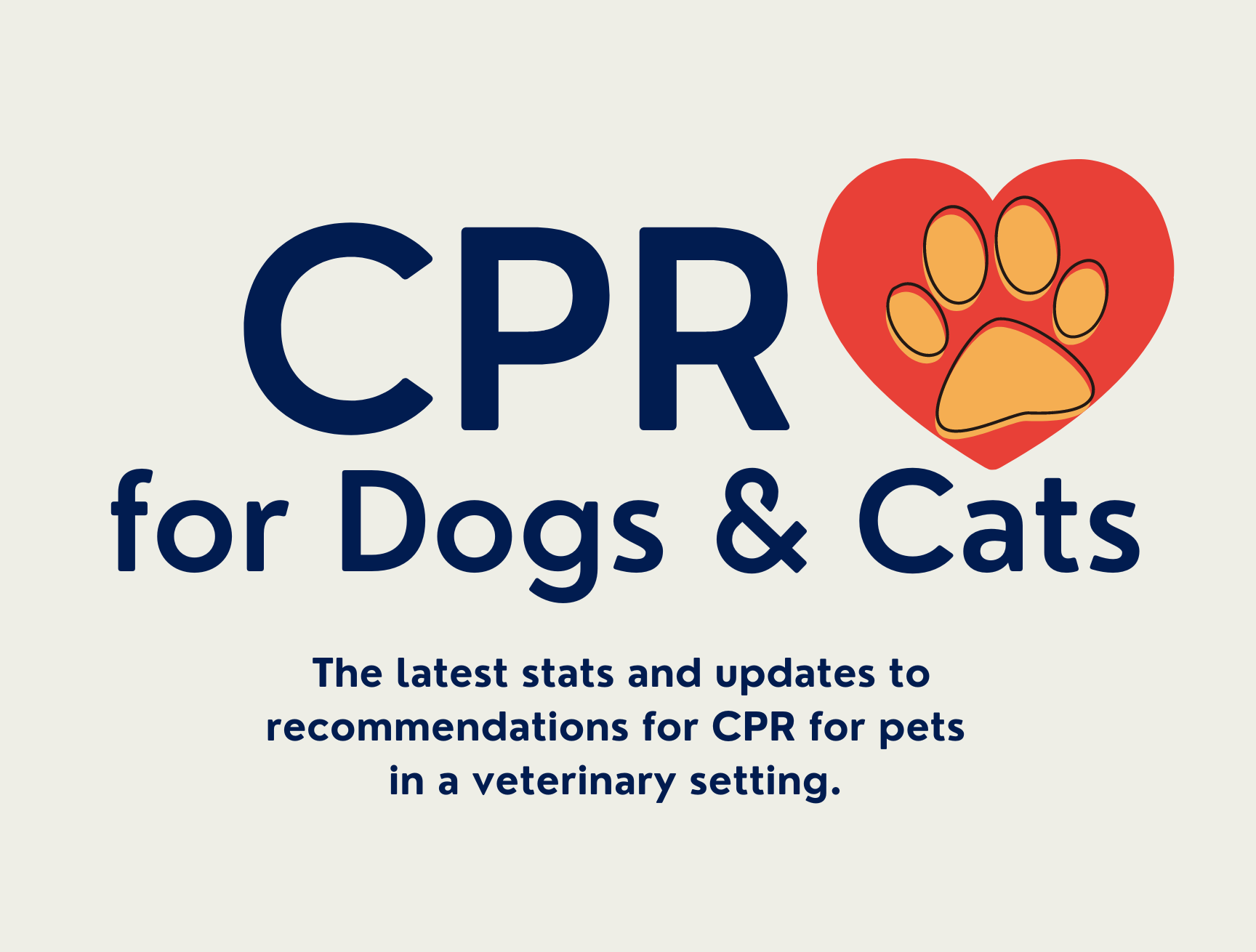Dog CPR Stats and Updates

The first RECOVER guidelines for dog CPR and cat CPR published in 2012. A whole bunch of experts in veterinary emergency and critical care went through and updated the guidelines based on what we know in 2024. Some of the stats on CPR for pets in veterinary settings surprised me, so let’s look at what’s changed (or not).
All this brings bad sad memories of the unexpected death of foster puppy DREAM in 2022. She survived emergency surgery to fix a tear in her diaphragm, but her heart stopped during anesthesia reversal, which is common. Some 20+ minutes of CPR could not save her. It turns out that dog CPR outcomes aren’t great. Yikes!
Dog CPR Basics
All of us really should get certified in dog CPR. Here, though, are the basics:
- Place most pets flat on their sides. Some dog breeds with large chests, like bulldogs, can receive CPR while they are on their backs, but it changes how hard you press down for chest compressions.
- Pet flat on side — compress 1/3 to 1/2 of the width of the thorax at the compression point
- Pet on its back — only comp0ress 1/4 of the thoracic depth at the compression point.
- For pets who are not intubated (like for surgery / anesthesia), it’s a ratio of 30 chest compressions to 2 breaths.
- The goal is about 100-120 chest compressions per minute.
Dog CPR Success Rates
After the implementation of the initial RECOVER guidelines in 2012, researchers looked at the success rates of dog CPR and cat CPR in 172 dogs and 47 cats who experienced cardiopulmonary arrest (CPA).
- 75 dogs (44%) and 26 cats (55%) attained return of spontaneous circulation (ROSC) — aka their hearts started beating again.
- 45 dogs (26%) and 16 cats (34%) achieved ROSC for longer than 20 minutes.
- After 24 hours, though, only 13 dogs (8%) and 10 cats (21%) were still alive.
- Of those pets, 12 dogs (7%) and 9 cats (19%) survived to hospital discharge.
- After 24 hours, though, only 13 dogs (8%) and 10 cats (21%) were still alive.
- 45 dogs (26%) and 16 cats (34%) achieved ROSC for longer than 20 minutes.

“The most common cause of death in animals with ROSC greater than or equal to 20 minutes was euthanasia,” according to the published paper reporting these dog CPR and cat CPR stats.
^^^^^^^
Maybe Even Worse Dog CPR Stats?
In the new RECOVER guidelines for dog CPR and cat CPR, however, the CPR success data looks quite a bit worse, but I suspect that’s because the data includes all pets whose hearts and breathing stop and not only the ones who do so “in association with an acute, reversable cause such as anesthesia.”
The intro to the new CPR guidelines for dogs and cats says, “Reports from single emergency or referral veterinary hospitals suggest that CPR survival in dogs and cats undergoing CPR is low and ranges from 5% to 7% in dogs and 1% to 19% in cats.”
For comparison … CPR success and actual survival rates for people aren’t great either. This NPR article from 2023 says it’s between 7.6% and 17%, depending on if a person goes into cardiac arrest + CPR happens in public or in a hospital setting.
Yeow that’s low for people and pets. Here’s a photo of foster puppy DREAM playing bitey face with Clover. Had she survived her injuries, we very well may have adopted / kept her. She was darn near perfect!

Updates to the Dog CPR Guidelines
Here are the biggest changes to the CPR guidelines for dogs and cats:
Important for Pet Lovers to Know
3 ways to do chest compressions on cats and small dogs: circumferential (gently wrapping both hands around the pet), one-handed with palm, one-handed thumb-to-fingers (kind of wrapping one hand around the pet).
Only compress pets’ chests to 25% depth when patient is in dorsal recumbency (pet’s laying on their backs, which is a common and often natural position for wide-chested dogs, like bulldogs and such).
Important for Veterinary Professionals to Know
No longer use high doses of epinephrine (was 0.1 mg/kg), instead use 0.01 mg/kg. It’s basically adrenaline.
If using atropine, only do it once and early in the CPR process. It’s a med used to increase heart rate.
It’s all super technical for veterinary professionals, so I’m not sure I can dig into the details much more than this. The new dog CPR guidelines provides detailed flow charts of what to do if veterinary professionals are alone in trying to save a pet or working in a team. It’s pretty interesting, if you want to read the whole thing yourself.
